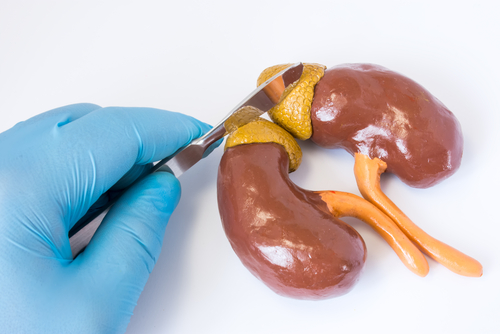Nelson’s Syndrome Can Affect 1 in 4 With Cushing’s Disease if Adrenal Glands Removed

Some 25% of Cushing’s disease patients — or 1 in every 4 — will develop Nelson’s syndrome (NS) after surgery to remove both adrenal glands, while around 1 in every 5 will need pituitary-specific treatment, a study found.
Lifelong follow-up is also needed for patients who undergo double adrenal gland removal, also known as bilateral adrenalectomy, since the risk of developing NS can persist for up to four decades.
The study, “Prevalence of Nelson’s syndrome after bilateral adrenalectomy in patients with cushing’s disease: a systematic review and meta-analysis,” was published in the journal Pituitary.
Bilateral adrenalectomy used to be the standard treatment for Cushing’s disease, a disorder in which benign tumors in the brain’s pituitary gland cause the adrenal glands sitting atop the kidneys to produce excessive amounts of cortisol.
Over the last few decades, however, other treatments, such as pituitary surgery, radiation therapy, and medications to alter cortisol levels or effects, have largely replaced it
Bilateral adrenalectomy, although considered safe and effective, has notable drawbacks. Two major ones are chronic adrenal insufficiency and an increased risk of NS, a condition in which the remaining pituitary tumor continues to grow and produce excessive amounts of adrenocorticotropic hormone (ACTH). This can cause vision loss, headaches, and hormonal imbalances — collectively known as chiasmal compression — as well as discoloration (hyperpigmentation) of the mucous membrane lining the inside of the mouth.
The prevalence of Nelson’s syndrome and its risk factors have been a matter of debate, varying from one study to the next.
To get a more complete view of NS among people with Cushing’s disease, researchers at several Swedish medical institutions and universities systematically reviewed past studies, compiling and analyzing their combined results.
They identified 37 studies, published between 1976 and 2020, covering 1,316 Cushing’s disease patients treated with bilateral adrenalectomy.
Post-surgery follow-up times ranged from 3.3 to 22 years, with a median follow-up of seven years. The median length of time from surgery to NS diagnosis was four years, although it varied between two months and 39 years.
The mean prevalence of NS across all studies was 26%. This increased to 31% when the team excluded studies that lacked a clear definition of NS (various definitions have been used) and rose to 38% among studies with MRI scans — often used to locate pituitary tumors — at diagnosis and during follow-up.
Researchers concluded that changing definitions of Nelson’s syndrome likely accounted for much of the variability in its frequency seen in different studies.
“We considered the definition of NS to be clear when it included either a new visible pituitary tumor or progression of a pituitary tumor remnant following BA [bilateral adrenalectomy], alone, or in combination with high ACTH concentrations and/or hyperpigmentation,” the researchers wrote.
Overall, 21% of patients in the studies (about 1 in every 5) required pituitary-specific treatment for NS. In most cases, treatment consisted on radiotherapy, followed by pituitary surgery, and finally by a combination of both.
Neither prior pituitary surgery, radiotherapy, nor age at bilateral adrenalectomy appeared to affect the risk of developing NS. The investigators noted, however, that the small number of studies included in their analysis prevent this from being a strong conclusion.
“The risk of NS may persist for up to four decades after [bilateral adrenalectomy],” the researchers wrote. “Life-long follow-up is essential for early detection and adequate treatment of NS.”






